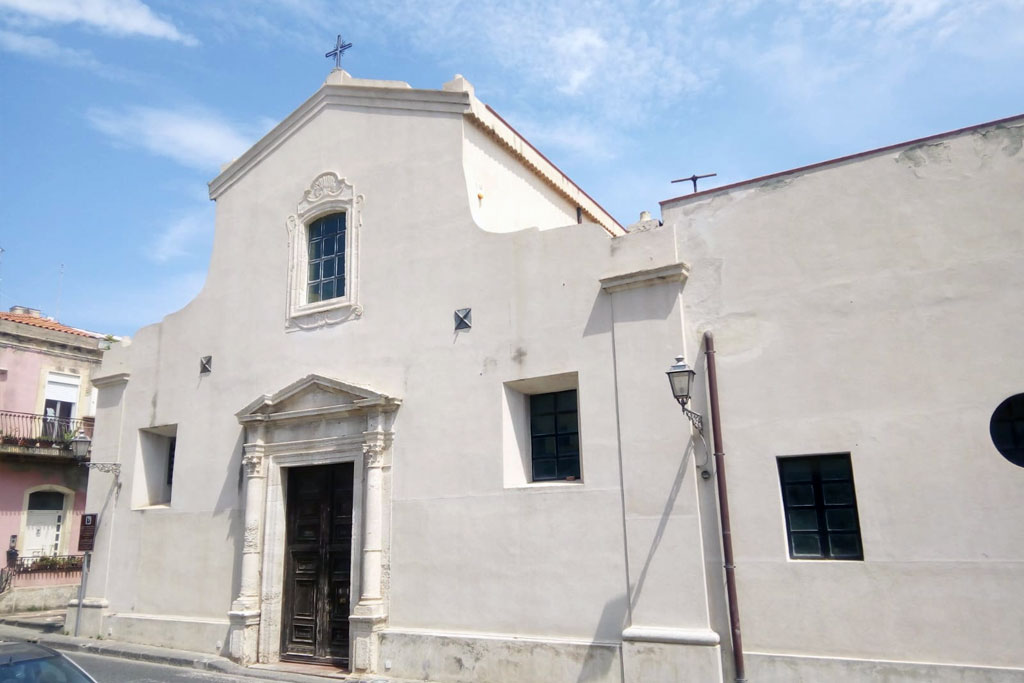Work on its construction began in 1538 after demolishing the 15th-century Church of St. Leonard. Church and convent underwent major alterations in the late 18th century. On the simple façade stands the portal, which rests on two half-columns with Corinthian capitals. At the top was a large oculus, later replaced in 1705 by an elegant rectangular window. The bell gable is at the rear. The interior has a Renaissance layout with three naves with five round arches resting on columns, a quadrangular apse and no transept. The ceiling of each nave is divided into five 18th-century crosses.

Church Our Lady of the Rosary
Eight altars are distributed in the two side aisles. On the right, the first is dedicated to St. Vincent Ferreri (with a polychrome statue attributed to Filippo Quattrocchi); the second to the Virgin Mary and Dominican Saints (with an 18th-century canvas attributed to Filippo Jannelli); the third is dedicated to the Virgin Mary with St. Catherine and St. Thomas (with an 18th-century canvas); the last altar was dedicated to St. Dominic with a gilded wooden antependium of particular value; the last column contains a wooden pulpit with a canopy supported by columns in an already neoclassical style. On the back wall is a small ornate polychrome wooden coffin on which is placed the effigy of the Infant Jesus; above is a painting of St. Anthony of Padua.
On the left: the marble and stucco tomb of Nicola Cumbo's family precedes the first altar of the Crucifix with an ancient polychrome simulacrum and poor marbles; this is followed by the late 17th century wooden altar depicting the Glory of St Dominic; the third altar bears a painting of St Jerome (1694); the fourth has a painting of Our Lady of the Rosary, St Dominic, St Catherine, St Vincent Ferreri and two worshippers. The fifteen oval bronze squares reproduce the Mysteries of the Rosary.
At the front of the nave is the prestigious Capuchin Custody transferred here from the ancient Capuchin Church. The high altar, made of polychrome marble and Carrara white bas-reliefs, is neoclassical in style and was erected in 1809 to replace a wooden altar from 1596. Finally, a large painting on the wall depicts Jesus healing a paralytic (1789), while the apse contains a painting of the Madonna of the Itria or Odigitria. The ceiling of the nave features frescoes by Domenico Giordano from Messina, dated 1789: Glory of St Dominic, St Dominic burning the books of heretics, St Dominic with Saints Peter and Paul.
INDIRIZZO
Chiesa Madonna del Rosario Via San Domenico 40, Milazzo (ME)







